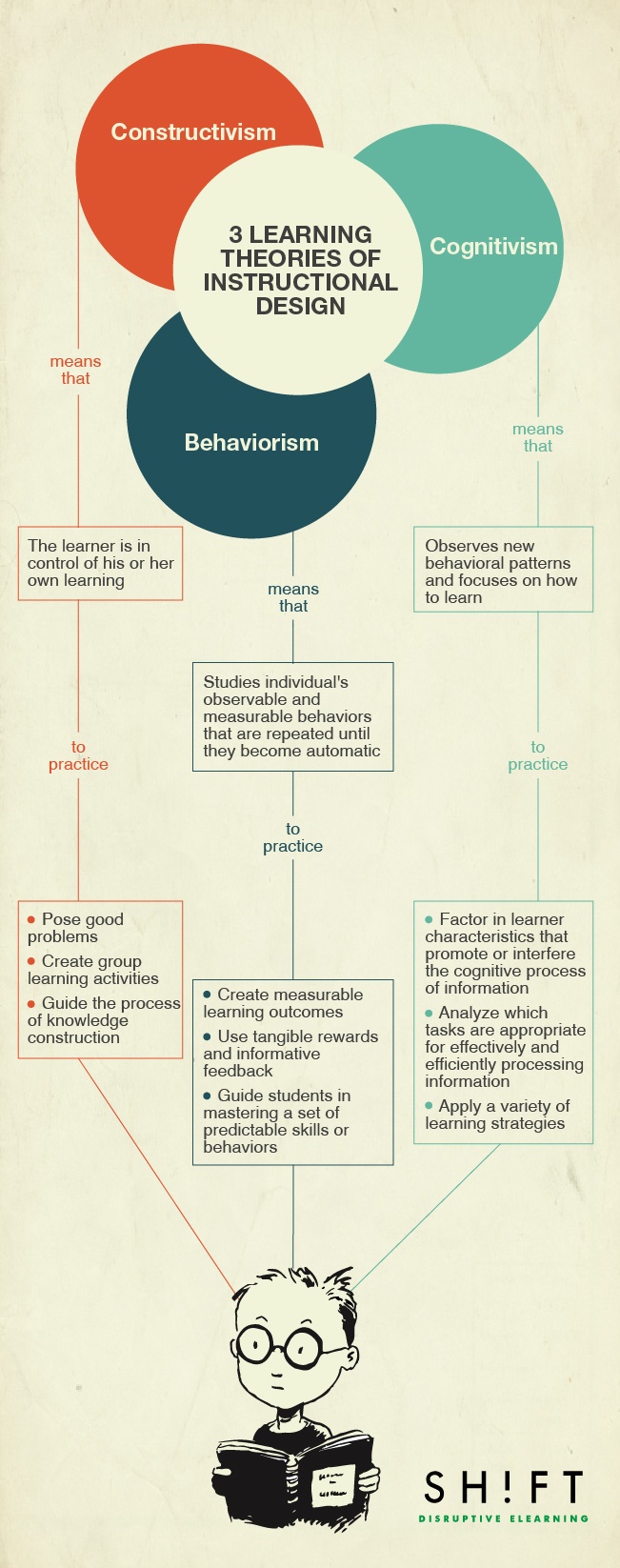Instructional design is a growing field given the amount of online courses we are seeing today.
It is becoming increasingly more important that we create learning experiences that “work”, and this is becoming more difficult each passing year as courses compete for the learner’s attention.
Instructional designers are tasked with finding the best way to teach new information to a target audience. There is no “one size fits all” approach. Any instructional designer worth their price is going to need to clearly set out unique objectives in the context of those who will be taking the course. Once these are flushed out then the method of content delivery can be selected.
Many people are familiar with the ADDIE method of course design. It is a proven template that anyone can use when creating instructional content. But this is not a “color by numbers” system. You have to make choices based on what ADDIE reveals to you.
One such choice is which theory of instructional design is ideal:
- Constructivism
- Cognitivism
- Behaviorism
In constructivism, the learner is in control of their own learning. In the online learning space these means providing them with a degree of freedom over the learning process.
Cognitivism studies an individual’s observable and measurable behaviors that are repeated until they become automatic. This is going to be best suited for live training events.
Behaviorism observes new behavior patters and focuses on how to learn. The critical component to making this theory effective is having a measuring/reporting process in place that is both reliable and accurate.
You could leverage all three of these theories but chances are one will be more dominant than the others. As such, it is often best to choose one.

Justin Ferriman
@LearnDashLMS






